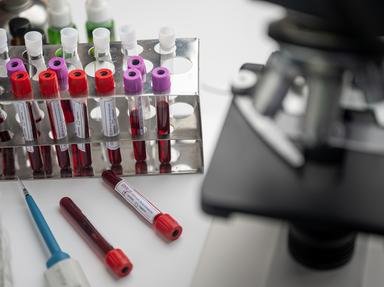Quiz Answer Key and Fun Facts
1. What name can be given to glucose, fructose and galactose?
2. It is widely known that the building blocks of proteins are amino acids. What reaction allows several amino acids to join together to form a protein?
3. Many people talk about "good" and "bad" fats. What must a fat contain to be classed as a "good" fat?
4. When using Biuret's test, which macromolecule will produce a positive reaction (colour change from blue to lilac)?
5. After eating proteins, fats or carbohydrates, they must be digested as they are large insoluble molecules and so cannot be absorbed into the blood stream. Enzymes catalyse the breakdown of these molecules into smaller soluble molecules. Which macromolecule would be most likely to bind with endopeptidase?
6. Once digested, fats, proteins and carbohydrates eventually enter the bloodstream. Which of the following recombine to form chylomicrons in epithelial cells of the small intestine before eventually entering the bloodstream via the subclavian vein?
7. Which macromolecule's functions include insulation, waterproofing, energy storage and shock absorption?
8. Which carbohydrate is a long unbranched chain of beta-glucose molecules, which is indigestible to mammals?
9. Animal cell membranes are mainly composed of a phospholipid bilayer. What happens to a triglyceride to form a phospholipid?
10. There are 20 naturally occurring amino acids and the many combinations of these monomers gives rise to a huge number of proteins, all with different functions. One use of proteins in the human body is as enzymes. Which of these bonds holds an enzyme in its tertiary structure?
Source: Author
doublemm
This quiz was reviewed by FunTrivia editor
crisw before going online.
Any errors found in FunTrivia content are routinely corrected through our feedback system.

